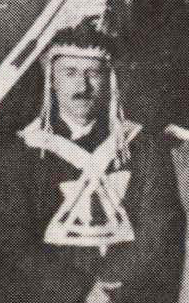Goodman matched his professional success during his years in Philadelphia with personal happiness. On June 18, 1920, he married Louise Wynkoop Waygood, a local girl whom he had first dated the same week in 1911 that he joined Troop 1. Louise and Urner had three children, Theodore Wynkoop, born August 12, 1921, George Walter, born February 26, 1923, and Lydia Ann, born April 21, 1927.
Family life centered on Urner’s job, the children, and church involvement. Both Urner and Louise were talented musicians, thus the children learned to play instruments, so the family often entertained each other with music evenings. Sundays were devoted to church and family activities, including the learning of Psalms in the afternoon. The Goodmans were very ecumenical. The family moved several times while the children were growing up and, if there were no Presbyterian church in the neighborhood, they would worship at Methodist churches or Quaker meetings.
When Goodman took a job in Chicago in 1927, the winters proved too cold for George, and Louise and her mother would take Ted, George and Ann to Florida for the winter, where the children attended the Sunshine School in a thatched building on the beach.
The children were all involved in Scouts. Ted was a Boy Scout and Sea Scout, and became a member of the Order of the Arrow at Treasure Island. George was a Boy Scout. Ann was a Brownie and Girl Scout, with Louise as her leader. When Louise learned there was no Girl Scout program for African-American girls in their town, she organized one.
The family loved to take car trips and Urner bought large cars just for that purpose. A favorite outing when they lived in New Jersey while Urner was national director of program was to Schiff Scout Reservation, to visit “Uncle” Bill Hillcourt and his wife, Grace. One summer, the family traveled by train to the west, where they visited the newly acquired Philturn Rocky Mountain Scout Camp (now Philmont).
Ted and George both served in World War II. George went overseas for the invasion of Europe, and was killed in action in 1944.
1, Founders, Goodman, OA, Profile, Scouting



